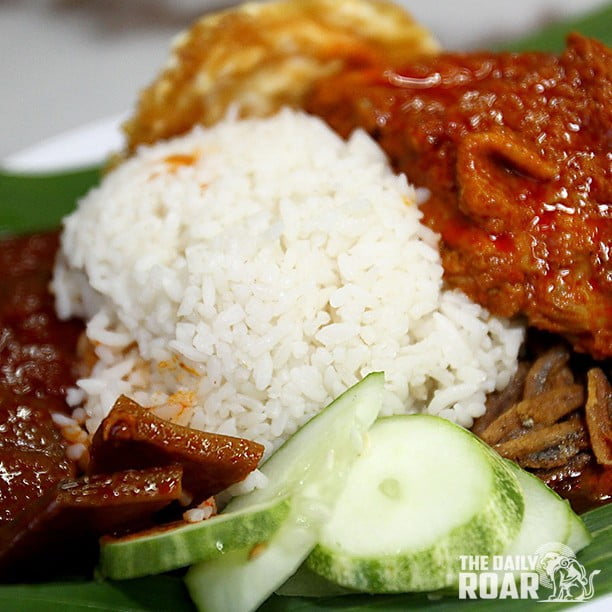Historically, rice has been the staple food in Asia. It didn’t matter whether it was for breakfast, lunch or dinner – rice would feature predominantly in the menu in various forms.
Nasi lemak directly translated to English reads as “fatty rice”, but don’t let that put you off!
Rice cooked in coconut milk with screwpine leaves (and at times ginger) for added fragrance and taste form the base of this sinfully delicious meal. It is classically served with a half-boiled egg, cooked chili paste (sambal), slices of cucumber and fried peanuts and anchovies. The “fatty” part of this dish comes from the natural fats in the coconut milk.
Usually there are other sides that can be added to or served with the main. These can either be chili squid, chili prawns, cockles, and beef or chicken rendang. Rendang is a typical Indo-Malay curry that is less spicy than its South Asian cousin, rich in coconut milk, cooked with fragrant screwpine leaves and various other spices.
Those less tolerant to spiciness may want to be a tad careful with the sambal. Depending on where you get your nasi lemak from, the spiciness levels will vary. The sambal itself can make or break nasi lemak. There are two main varieties of sambal. One is a little more liquid with more water added during the cooking process and has a red color with an orange tinge to it. The other is pastier and has a dark red (almost brown) color and can be a lot spicier. This is due to the addition of brown sugar added during the cooking process to thicken the sambal.
Nasi lemak truly is a classical Malaysian dish. It originates from the Malay culture and suited the times when farmers who mainly worked the paddy fields needed the energy for a full day work, out in the blistering and humid weather. Now, it is served for breakfast, lunch and dinner, and can be found from roadside stalls and Indian-Muslim restaurants that sell it as breakfast to any high-end restaurant that boasts a Malaysian menu.
This dish tantalizes both the taste buds and the olfactory nerves. The fragrant rice cooked to perfection mingled with the spiciness of the sambal and the saltiness of both the peanuts and anchovies explode in your mouth and work amazingly well together.
If you truly want to experience Malaysia, nasi lemak is definitely one of the many Malaysian dishes that you’ll have to try!

A typical nasi lemak pack is usually wrapped in banana leaves with rice, hard-boiled egg, cucumber and sambal. In this picture, rendang was added as well. The cost of a packet of nasi lemak depends on where you get it. This cost RM2.00.

























